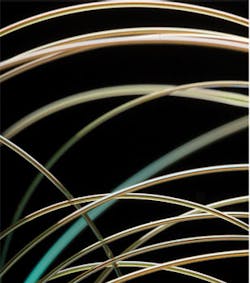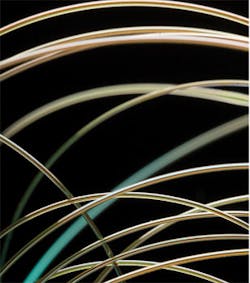FIBER OPTICS/LASER SURGERY/PDT: Super-thin, variable-brightness fiber may enable procedures other lasers can't touch
A very narrow fiber light source with brightness variability could enable medical devices to reach into narrow openings to irradiate diseased tissue—and leave healthy tissue untouched. The fiber laser could prove useful in photodynamic therapy (PDT), a method in which light activates injected therapeutic compounds only at targeted locations. The developers, researchers from the Massachusetts Institute of Technology (MIT; Cambridge, MA) Research Laboratory of Electronics (RLE), envision the fiber enabling procedures that are difficult to accomplish with any other laser approach.1
Measuring just 400 µm across, the fiber has a hollow core surrounded by alternating layers of materials with different optical properties, which together act as a mirror. In the core is a droplet of fluid that can be moved up and down the fiber. A laser pumps the droplet to make it emit light—which bounces back and forth between the mirrors, emerging from the core as a 360° laser beam. Surrounding the core are four channels filled with liquid crystals, which vary the brightness of the emitted light; each liquid-crystal channel is controlled by two electrode channels running parallel to it.
1. A.M. Stolyarov, Nat. Photon., 6, 229–233 (2012).
More BioOptics World Current Issue Articles
More BioOptics World Archives Issue Articles

